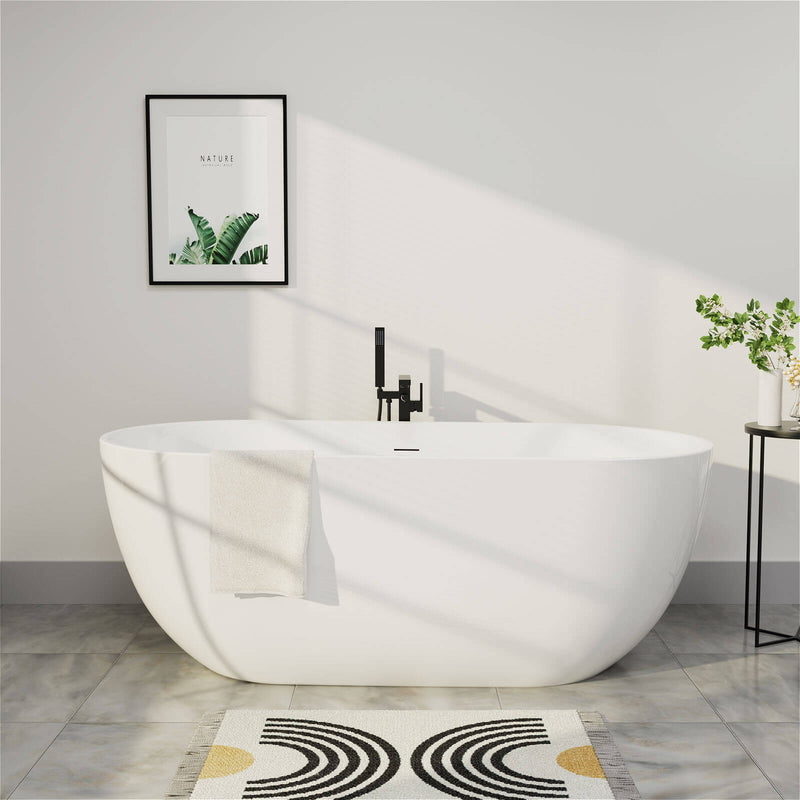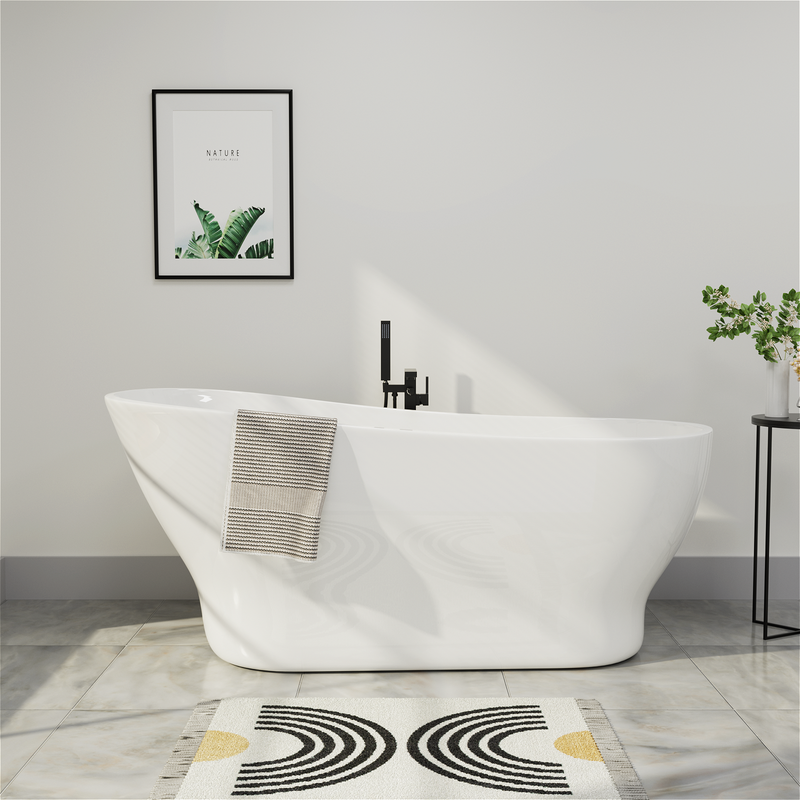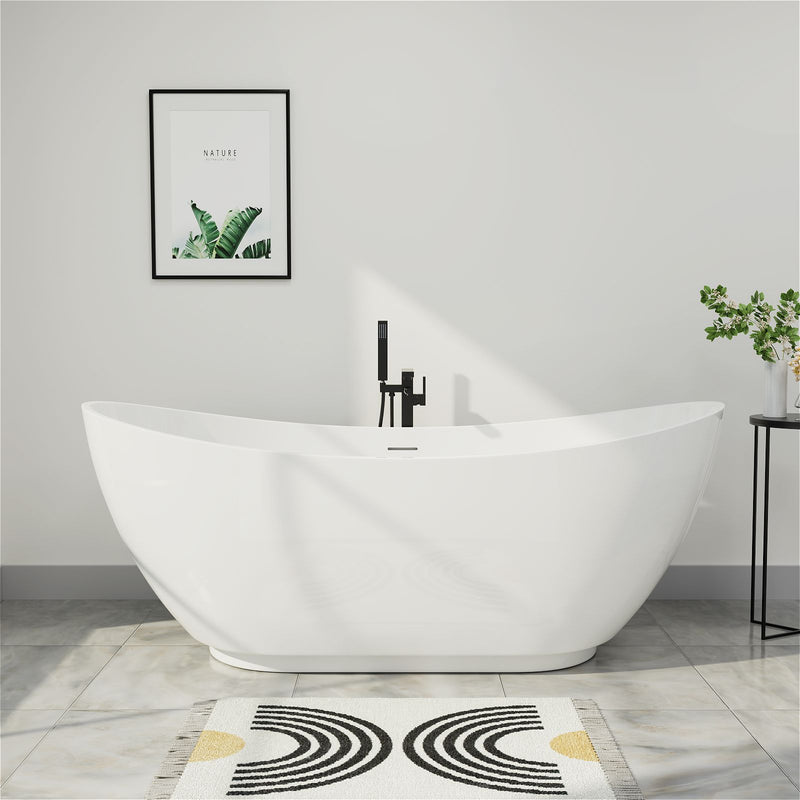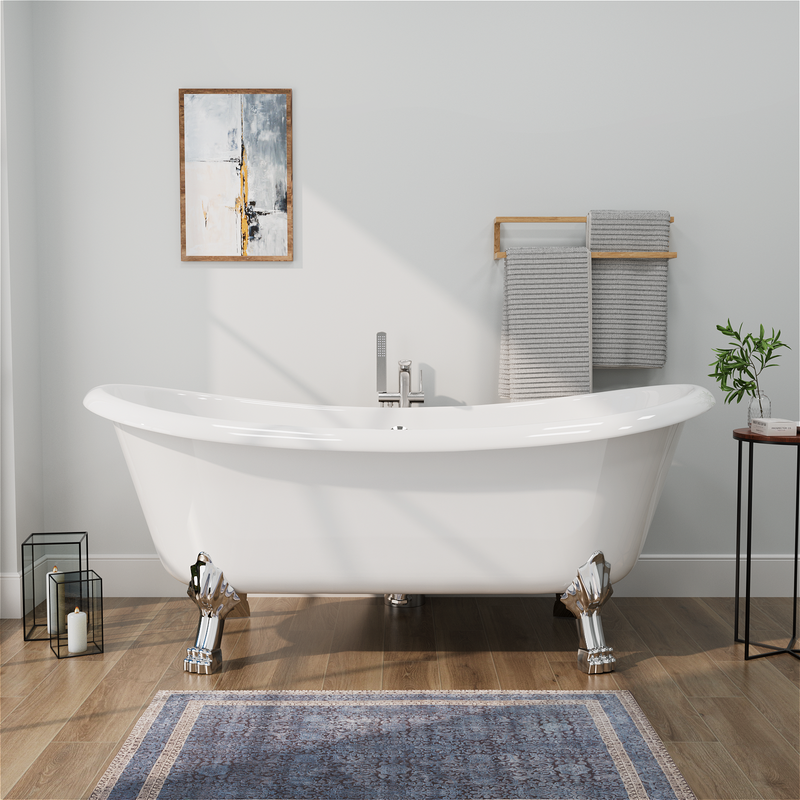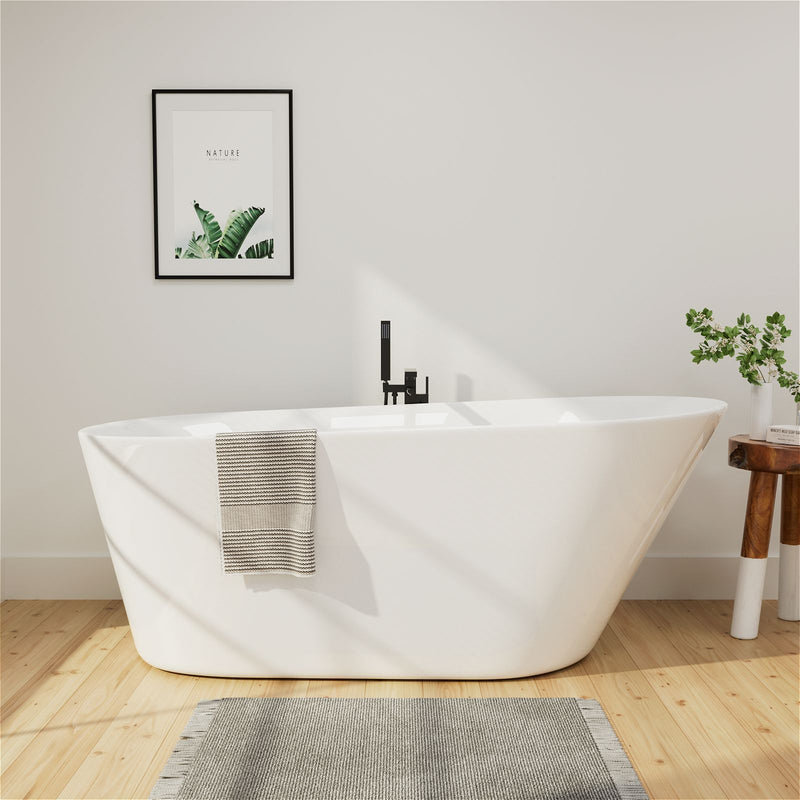Are you tired of your traditional bathtub and want a unique and luxurious bathing experience? Air tubs may be the answer. These tubs are designed to provide a relaxing, therapeutic massage through warm bubbles, creating a unique and refreshing experience. Air tubs are available in a variety of styles, sizes, and features, allowing you to customize your bathing experience to your needs and preferences.
This guide will take a comprehensive look at everything you need to know about air tubs, from their features and benefits to installation considerations and maintenance tips. Whether you are renovating your bathroom or are simply curious about this innovative technology, this article will provide relevant information to help you make an informed decision about whether to install an air tub in your home.
What is an Air Tub?
An air tub or air bath is a bathtub equipped with jets that blow heated air into the tub, unlike whirlpool tubs, which use jets to spray hot water instead of air. These jets are designed to provide a more therapeutic soaking experience by massaging the body to relieve muscle soreness and provide comfort. Because of this, air tubs are usually designed to be larger to hold more water, which means they also require a bathroom large enough to accommodate them.
History of Air Tubs
Both air and water jets originated from the same invention: underwater hydrotherapy jets.
The jets were first invented by the Jacuzzi brothers in the mid-20th century. Seeking to create a home hydrotherapy system to treat ailments, they developed underwater jets that sprayed a liquid that was half air and half water.
Today, hot tubs and whirlpools typically use water jets that are either a mixture of water and air. However, air tubs are unique in that they use jets that are only air.
What are the Differences Between Air Bathtubs and Traditional Bathtubs?
There are several key differences between air bathtubs and traditional bathtubs. The main difference is the way they provide a relaxing and healing experience. While traditional bathtubs are usually designed for warm water soaking only, air tubs are equipped with air jets that release warm bubbles into the water. This creates a massaging and soothing sensation that has many benefits for both physical and mental health.
Another difference between air tubs and traditional bathtubs is the material they are made of. Air tubs are usually made of high-quality acrylic, which is durable and easy to clean. Traditional bathtubs, on the other hand, are made from a variety of materials, including cast iron, steel, or fiberglass.
Air bathtubs also come in a variety of sizes and shapes to suit different bathroom layouts and design preferences. They can be freestanding or installed in a corner, and can be rectangular, oval, or even round in shape. In contrast, traditional bathtubs are usually rectangular or oval in shape and are usually installed in a recess in the bathroom wall.
Generally speaking, air bathtubs offer a different bathing experience than traditional bathtubs. While traditional bathtubs are meant for soaking, air bathtubs offer a unique and luxurious hydrotherapy experience that is beneficial to your physical and mental health. In addition, air bathtubs are available in a variety of shapes, sizes, and materials, making them a flexible option for any bathroom.
How Air Bathtubs Work
The mechanism of an air bathtub consists of a blower that pushes air toward a distributor, which directs the air to multiple carefully designed nozzles within the bathtub. As you are in the water, each nozzle of the air massage system surrounds your lower back, hips, and legs. For added comfort, some models heat the air to body temperature via a heating element built into the blower.
Types of Air Bathtubs
Like almost every other bathtub model currently on the market, air bathtubs come in a wide variety of styles. These styles are designed to fit in almost any bathroom, so it's best to understand their benefits to determine if they're right for you.
Freestanding Bathtubs
Freestanding bathtubs are the largest choice on the market and are impressive to look at. Not only are they beautiful, but they can be placed anywhere in the bathroom. However, it's important to note that they are usually the heaviest, so it's recommended that you reinforce the floor.
Undermounted Bathtubs
The more traditional or common type of air bathtub is the undermount or drop-in style. This type of bathtub is installed below the installed rim, which is more stable while saving space. The downside is that your bathroom needs to be able to accommodate both the size of the bathtub and the size of the rim around it.
Shower-Bathtub Combos
For users looking for a flexible option, this design combines the shower and bathtub of the previous two styles into one. It not only provides a shower for those who seek a quick bathing experience, but also retains all the functions of a regular bathtub for those who seek a longer soaking experience, making your bathtub more flexible and versatile.
Advantages and Disadvantages of Air Bathtubs
Using an air bathtub can bring a range of benefits, including relaxation, stress relief, blood circulation, and pain relief. The warm bubbles can also help cleanse the skin and promote sleep. However, it's worth noting that there are some downsides to air tubs. One potential downside is that they can be more difficult to clean than a traditional tub. Additionally, some people may find the noise of the jets distracting.
Exploring the benefits of using an air tub further, the warm bubbles released by the jets can help soothe sore muscles and joints, which can be especially beneficial for people with arthritis or other inflammatory conditions. The massaging action of the jets can also help reduce stress and improve your overall mood by boosting blood flow and promoting relaxation. Additionally, the warm bubbles help exfoliate and cleanse the skin, leaving it feeling soft and refreshed.
While air tubs do have some potential downsides, they can be easily addressed with proper care and maintenance. To minimize cleaning challenges, it's vital to clean the tub regularly and avoid using harsh chemicals or abrasive cleaning tools. Additionally, if you're concerned about noise, look for an air tub with adjustable jet settings or a quiet operation feature.
Overall, air tubs are a great investment for those who want to elevate their bathing experience and enjoy its many benefits. By carefully considering the various features and options, you're sure to find an air tub that fits your needs and your budget. With proper installation, maintenance, and safety precautions, you'll be able to enjoy your new air tub for years to come.
Things to Consider When Buying an Air Tub
When buying an air tub, there are several factors to consider to ensure you choose a tub that fits your needs and preferences.
Consider the size of the air tub. You'll want to make sure the tub will fit comfortably in your bathroom and is large enough to accommodate your body type. Also consider the depth of the tub, as this can affect the comfort level while bathing.
Consider the shape and style of the air tub. Some tubs are rectangular, while others are oval or round. Some air tubs are freestanding, while others are built into the wall. Consider the overall design of your bathroom and choose a tub that will fit perfectly with the space.
Consider the type and number of jets. Some air tubs come with adjustable jets that allow you to customize the intensity of the massage, while others come with fixed jets that provide a constant pressure. The number of jets may also vary, so consider how much massage you want.
Consider the materials the air tub is made of. Acrylic is popular because it is durable, easy to clean, and retains heat well. Some air tubs also come with additional features, such as built-in heaters or chromotherapy lighting, to enhance the bathing experience.
Consider the installation and maintenance requirements of an air tub. Some tubs require professional installation, while others can be installed by homeowners themselves. Additionally, some air tubs require regular maintenance, such as cleaning and changing filters, so consider how much time and effort you are willing to invest in maintaining the tub.
By considering these features when shopping for an air tub, you can choose a tub that fits your needs and preferences and provides a luxurious and relaxing bathing experience.
Safety Issue to be Aware of When Using an Air Tub
While air tubs are generally safe to use, there are still some safety issues you should keep in mind to ensure safe use of the tub:
Electrical safety: Since air tubs require electricity to operate, it is important to make sure your bathroom's electrical system is safe and up to code. Always follow the manufacturer's installation instructions to install the tub, and hire a licensed electrician if you have any questions about the installation process.
Slips and Falls: Air tubs can be slippery when wet, so be sure to install non-slip mats and non-slip handrails to prevent falls. Also, be careful when entering and exiting the tub, especially if you have limited mobility or if the tub is high off the ground.
Water Temperature: Air tubs can get very hot, so be sure to test the water temperature before entering. Avoid using water that is too hot, as this can cause scalding or burning.
Water Quality: Be sure to use approved bath additives and clean the tub regularly to maintain the water quality in your air tub. Poor water quality can cause skin irritation, infection, or other health issues.
Children and Pets: Always supervise children and pets when they are around an air tub. Keep the tub covered when not in use to prevent accidents or injuries.
By following these safety guidelines, you can enjoy the relaxing and therapeutic benefits of an air tub without having to worry about any potential dangers.
Holistic Practices of Air Tubs
While air tubs are widely used for relaxation and muscle rejuvenation, many people also use them for holistic therapies like aromatherapy and chromotherapy. The American Cancer Society defines holistic medicine as "a focus on how the physical, mental, emotional, and spiritual elements of the body relate to each other to maintain health or overall well-being." Many air bath manufacturers combine the holistic treatments of aromatherapy and chromotherapy with the medically recognized benefits of hydrotherapy.
Aromatherapy, which uses naturally occurring aromas to promote physical and mental well-being, has become an important part of the air bath experience. Users drop essential oils onto a pad inside a hidden canister near the edge of the air bath. This canister sits over the path of compressed air from the air pump. So when the tub is turned on, millions of bubbles carry the aroma into the water and eventually into the air.
Aromatherapy and air baths are a perfect match. Air baths also allow bath oils and bath salts to be mixed directly into the water. Adding these extras to a whirlpool tub can cause its pumping system to clog. This doesn't happen with air baths because they don't pump water.
Recently, bath manufacturers have also added lighting options to their tubs. This therapy is called chromotherapy, and users can use underwater lighting to add color to the water in the tub. Chromotherapy is known for its ability to bring a sense of calm and balance to the user.
Conclusion
In summary, deciding whether an air tub is right for you involves both practical and personal considerations. Air tubs offer the perfect blend of comfort and luxury, providing a soothing, gentle massage experience that many people find incredibly relaxing. Air tubs can be particularly beneficial for those who want a therapeutic soak to relieve muscle tension or boost circulation. However, air tubs are pricier and require more maintenance than standard tubs.
Before making a decision, evaluate your budget, space, and how much you value the features of an air tub. Consider how often you use the tub and whether its benefits align with your lifestyle. If you value a spa-like experience and are willing to invest in a high-end product, an air tub may be a worthy addition to your home. Conversely, if you prefer an affordable, low-maintenance option, a traditional bathtub or whirlpool tub may better suit your needs.
Ultimately, the right choice comes down to your personal preferences and how you weigh the benefits of an inflatable tub against the cost and maintenance. Take the time to conduct thorough research and, if possible, experience an air tub in person to ensure it fits perfectly with your relaxation experience and home environment.

